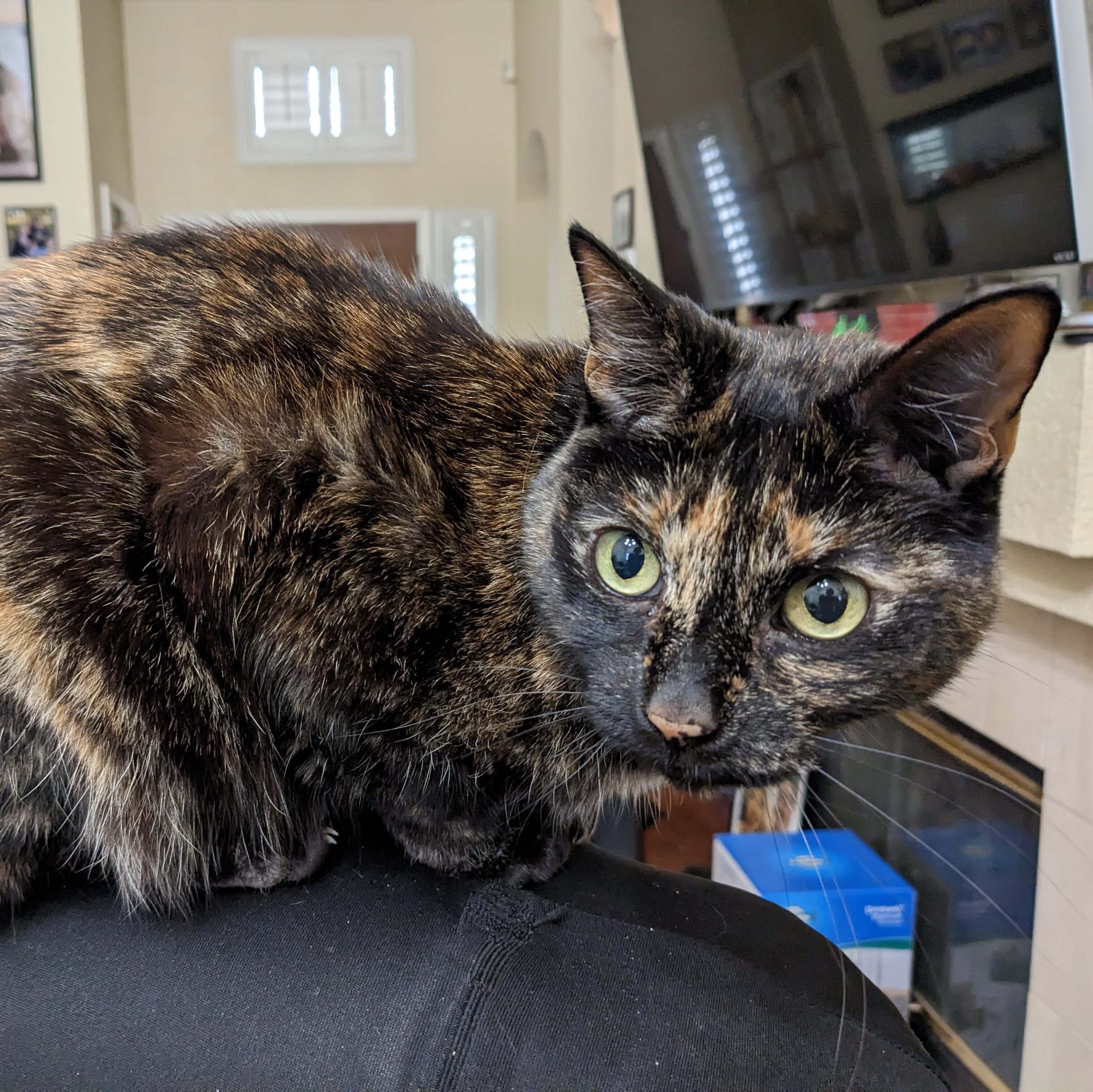https://mullvad.net/en/help/install-mullvad-app-linux
Trying to install VPN and these are the instructions Mullvad is giving me. This is ridiculous. There must be a more simple way. I know how to follow the instructions but I have no idea what I’m doing here. Can’t I just download a file and install it? I’m on Ubuntu.
It’s less complicated than it looks like. The text is just a poorly written mess, full of options (Fedora vs. Ubuntu, repo vs. no repo, stable vs. beta), and they’re explaining how to do this through the terminal alone because the interface that you have might be different from what they expect. And because copy-pasting commands is faster.
Can’t I just download a file and install it? I’m on Ubuntu.
Yes, you can! In fact, the instructions include this option; it’s under “Installing the app without the Mullvad repository”. It’s a bad idea though; then you don’t get automatic updates.
A better way to do this is to tell your system “I want software from this repository”, so each time that they make a new version of the program, yours get updated.
but I have no idea what I’m doing here.
I’ll copy-paste their commands to do so, and explain what each does.
sudo curl -fsSLo /usr/share/keyrings/mullvad-keyring.asc https://repository.mullvad.net/deb/mullvad-keyring.asc echo "deb [signed-by=/usr/share/keyrings/mullvad-keyring.asc arch=$( dpkg --print-architecture )] https://repository.mullvad.net/deb/stable $(lsb_release -cs) main" | sudo tee /etc/apt/sources.list.d/mullvad.list sudo apt update sudo apt install mullvad-vpnThe first command boils down to “download this keyring from the internet”. The keyring is a necessary file to know if you’re actually getting your software from Mullvad instead of PoopySoxHaxxor69. If you wanted, you could do it manually, and then move to the /usr/share/keyrings directory, but… it’s more work, come on.
The second command tells your system that you want software from repository.mullvad.net. I don’t use Ubuntu but there’s probably some GUI to do it for you.
The third command boils down to “hey, Ubuntu, update the list of packages for me”.
The fourth one installs the software.
Thanks for the explanation. However trying to run the first command gives me sudo: curl: command not found
So I’m stuck right there in the first step lol
I would have guessed that Ubuntu would install it by default since its a very common way to get stuff from the internet (when in the terminal), but apparently not (the other option is
wgetwhich is most likely installed, but that uses a different way to get the stuff).You should be able to install curl with
sudo apt install curlMy fresh Debian install didn’t have that too and I thought it came with the installation
Debian doesn’t even come with sudo, git or curl by default. It’s kind of minimal on purpose.
I didn’t know that any distribution comes with git preinstalled.
That should be easily solved with:
sudo apt install curlYou have two options: install
curl(check @TrickDacy@lemmy.world’s comment) or do it manually. Installing curl is the easiest.If you want to do it the hard way (without the terminal), here’s how:
- Download the file
https://repository.mullvad.net/deb/mullvad-keyring.ascfrom your web browser. - Open your file browser as administrator. There’s probably some link for that in the Menu.
- Move the file that you just downloaded to the directory
/usr/share/keyrings/
Really appreciate your replies dude. So many are being a bit of an jerks here, but you (and few other) have been really helpful.
You’re welcome.
I think that people being jerks take for granted how confusing this might be, if you’re new; we (people in general) tend to take vocab that we already know for granted, as well as solutions for small problems. …except that it doesn’t work when you’re starting out, and we all need to start out somewhere, right.
Yeah, once you work in Linux for so long seeing someone ask about curl missing is really easy to take for granted that we all started there, we’ve all been fresh on Linux. A lot of people take pride in their experience, but they shouldn’t lord it over those who are learning to advance themselves. It’s completely counter to why Linux even exists.
- Download the file
Wow, interesting. You may be able to install curl to fix that like this:
sudo apt-get update sudo apt-get install curlCan’t hurt to try
sudo apt install curl
sudo apt install curl
This is a great explanation. And really well written. Thank you for taking the time to put it together
I love this community because of responses like this.
Any instructions that say sudo curl should be thrown out immediately.
Agreed it’s not best practice. But when somebody is saying the individual step-by-step is too complicated, you want to give them the simplest command possible. Even if it is more risky. It’s a trade off of accessibility versus complexity
to be fair all of that should be a flatpak you click once to install
Frankly in this case even a simple bash script would do the trick. Have it check your distro, version, and architecture; if you got curl and stuff like this; then ask you if you want the stable or beta version of the software. Then based on this info it adds Mullvad to your repositories and automatically install it.
nowadays they always come across as lazy to me, when a bunch of options are available to make installing software on linux painless.
I like them, even for software installation. Partially because they’re lazy - it takes almost no effort to write a bash script that will solve a problem like this.
That said a flatpak (like you proposed) would look far more polished, indeed.
oh i meant devs who provide packages but don’t bother with install scripts.
bash scripts are fine when they exist.
Ah, got it. My bad. Yeah, not providing anything is even lazier, and unlike “lazy” bash scripts it leaves the user clueless.
So usually people do install Linux software from trusted software repositories. Linux practically invented the idea of the app store a full ten years before the first iPhone came out and popularized the term “app.”
The problem with the Mullvad VPN is that their app is not in the trusted software repositories of most Linux distributions. So you are required to go through a few extra steps to first trust the Mullvad software repositories, and then install their VPN app the usual way using
apt installor from the software center.You could just download the “.deb” file and double click on it, but you will have to download and install all software security updates by hand. By going through the extra steps to add Mullvad to your trusted software repository list, you will get software security updates automatically whenever you install all other software updates on your computer.
Most Linux distros don’t bother to make it easy for you to add other trusted software repositories because it can be a major security risk if you trust the wrong people. So I suppose it is for the best that the easiest way to install third-party software is to follow the steps you saw on the website.
Some .deb packages actually include their repository and they can then be updated via the package manager. An example for this is the Vivaldi .deb.
Download the .deb and double click it. https://mullvad.net/en/download/app/deb/latest
People seem to be making this a more difficult job than it needs to be. Yeah I get we’re powerusers but can’t we drop that for 2 minutes while giving advice so a new user can actually get a job done quickly? Windows EXEs don’t automatically update either. Sure it might not be the best way to do it but it’s fast and not confusing. (EDIT: Apparently this specific program actually has it’s own auto updater)
Things take time to learn. Throwing all of the existing knowledge of repo management at a new user at once does not work.
Probably better to link the downloads page, rather than the direct download link: https://mullvad.net/en/download/vpn/linux
As others have mentionned downloading the .deb and running it will also work, but I feel nobody gave your a tldr of why you may want to follow those instructions instead, so here it is:
Those instructions configure your package manager (apt) with a new repository for this application.
The upside to that is that anytime you will look for updates, this app will also get updated.
It’s a bit more work up front, but it can pay off when you have dozens of app updating as part of normal system operations.
Imagine a world where windows updates would also update all your software, that’s what this is.
Also, no, this is not an ideal way to do this. Ideally every package you want is in your distro’s repos so you’d just need to do “apt install [package]”.
The reason this one isn’t is because mullvad wants to make sure you use their tested, secure, and updated version and they don’t want to maintain that for every distro. So they have you configure your package manager to use their repos.
This is relatively uncommon to come across in Debian. You’ll normally only find it in security applications or very niche ones. The Debian repos aren’t the most comprehensive but they’ll contain the vast majority of common softwares.
That’s not how you do it.
Click ‘Downloads’ on the Mullvad website.
Scroll to the bottom section ‘Unable to use the app’
Click ‘OpenVPN’.
Download OpenVPN config.
You already have OpenVPN installed, skip all fancy installation steps.
Click network settings in the taskbar, ‘New connection’, ‘OpenVPN’, ‘Import configuration’.
Turn on your new VPN connection. Done.
THIS!
Not one more repository to add, sign, reload at each update. And can get compromised.
Not one more piece of software to run that may, or may not, run properly (looking at you ProtonVPN)
Just download the wireguard or openvpn configs to some desired exit points, load them into NetworkManager as described, and BINGO you have an integrated way of switching desired location, a visual icon in the taskbar confirming your status, and no extra hassle.
Did you know that qbittorrent can be told to only work if the VPN is on? There are places where it matters.
And to answer your question, no, that is not normal. If a piece of software isn’t available for your distribution, then consider finding another. Like, here, using NetworkManager to do the job!
It seems Mullvad has the OpenVPN option tucked away as the very last option even though OpenVPN seems to be the easiest method. Why is that?
Because OpenVPN lacks the most important feature of them all - it will not remind you to top up your account balance.
Because they want to lock you into their app and make you think VPNs are complicated so you actually pay for the service.
As I’ve heard it, wireguard is much more secure.
More Performant, yes. More Secure? Not sure about that
I went with OpenVPN because it’s installed on Ubuntu by default. Wireguard needs one extra apt-get command.
I don’t think that Wireguard is more secure, its’s simpler and thus easier to audit, but OpenVPN was audited to the gills already.
why tf wouldn’t OP be better served by a provided repo? Literally a add it to the sources.list and never think about updates again.
Because installing some random app is worse than simply using pre-installed system service.
Both are security audited, but I’d still rather trust OpenVPN.
This is one of the hardest walls for people to jump over mentally, from scavenging the internet for binaries to using a package manager.
I think ideally one should understand what they’re doing, I think that if you did you would realise it’s not hard, just different from what you’re used to. Usually you install things using the graphical package manager, of which there are a lot, since I don’t know which one you are using nor have I used any of them in a long while, I’ll use the terminal as an example (same reason the site uses terminal commands), but all of this is almost assuredly possible via GUI.
To install things you usually do
sudo apt install, this is a huge advantage on Linux, it works similar to your phone in that everything gets updated together but also it installs dependencies separately, which means that instead of having 10 copies of the same library for 10 programs that use it (like on Windows) you get a single one, which is part of the reason binaries are smaller on Linux.The problem with this approach is that some programs are NOT listed there, the only programs there are the ones the maintainers of your distro (Ubuntu in this case) can review and approve. So you can have a lot of different solutions for this:
The first and most obvious for Windows users is to download the .deb from the website and just run that like you would a binary on windows, i.e. double-clicking it, or from the terminal you can run
sudo dpkg -i. This works, but you lose the advantages of a package installed via your package manager, i.e. you would get the same experience as on windows, so it’s not ideal.The second way is the one they’re describing, essentially you’re adding a new repository to the package manager, that the people who wrote the program are maintaining (instead of Ubuntu guys), this is a two step process,
sudo curl -fsSLo /usr/share/keyrings/mullvad-keyring.asc https://repository.mullvad.net/deb/mullvad-keyring.ascthat command is downloading the filehttps://repository.mullvad.net/deb/mullvad-keyring.ascand putting it in/usr/share/keyrings/mullvad-keyring.asc, this is needed because repositories are not trusted by default, that would be a security nightmare, you can do this via GUI if your problem is with the terminal , just download the file and copy it to that location, it’s just harder to explain than giving you a command. Then it’s adding the repository to the repository list, the command isecho "deb [signed-by=/usr/share/keyrings/mullvad-keyring.asc arch=$( dpkg --print-architecture )] https://repository.mullvad.net/deb/stable $(lsb_release -cs) main" | sudo tee /etc/apt/sources.list.d/mullvad.listthat command has a lot to unwrap, in essence it’s editing the file/etc/apt/sources.list.d/mullvad.listand writing a line likedeb [signed-by=/usr/share/keyrings/mullvad-keyring.asc arch=amd64] https://repository.mullvad.net/deb/stable focal main"there, but because the guy who wrote this doesn’t know your architecture (e.g. amd64) nor your version (e.g. focal) he wrote a command that gets that information from your system, you can instead write the file yourself if you know those. Then install via package manager as normal.There’s a third way which is more recent which is install via snap/flatpak which is similar to install via package manager, except you don’t add new repos.
There’s a fourth way which is manually, usually when you compile stuff you install them manually.
I know it’s a lot to take in, but I’m of the opinion that if you understand what’s happening it makes things easier.
The problem is that for most users, when their setup is completed they won’t need to play with it for a while so after that any time they need to install something new through the terminal it means losing time to find instructions again.
Nothing is learned, to the eyes of a casual users it’s just meaningless entries getting copy/pasted and it’s information getting repeated again and again and again just with slightly different entries for each program. Meanwhile “how to install a program on Windows” would basically require one page on the whole internet to cover 99% of situations: “Download the install file, double click it, follow the on screen instructions to automatically install the program”.
The problem is that for most users, when their setup is completed they won’t need to play with it for a while so after that any time they need to install something new through the terminal it means losing time to find instructions again.
Which is why it’s better to understand what you’re doing than blindly copying pasting. You won’t need to remember these since whatever you want to install if it’s not on the repos you’ll have to google it same as if you were on Windows.
Also on Windows the steps are: Download the install file, double click it, follow the on screen instructions to automatically install the program, then every week or so go back to the website, check if a new version was released, if so download it and install it again. If the configuration would be destroyed by doing this first, make a backup first, if the new version is not backwards compatible for configuration move the existing configuration changes so that you get the new default after install and can apply your changes afterwards.
That’s closer to the truth, and you need to do that weekly for every one of the dozen or hundreds of programs a person has, no wonder people don’t update their programs on Windows and become susceptible to lots of exploits over time.
Also, read my option 1, which is what most websites offer you first, i.e. download a .deb and run it which is the equivalent of Windows, with all of its downsides. For example if you go to that website that OP posted and click on downloads you can select Windows, Mac or Linux, and you can download an installer that way and be done with it. But only Linux has a better option that takes a couple more steps but saves you lots of time in the future.
then every week or so go back to the website, check if a new version was released, if so download it and install it againDon’t know what kind of program you’re running but… No.
Also if you want adoption you need to make your product easy to use and not ask them to become experts at how things work. Do you think all bike riders know how to adjust their derailer or even care to know? No, because people have other things they care about. Same guess 6 for computers, if Linux requires users to understand how to do things manually in the terminal then the “year of the Linux computer” will never happen.
the “year of the Linux computer” will never happen.
It won’t, that’s fine. People who don’t want to lean anything about computers use iOS and Android now. And that’s fine. I never want Linux distros to become like that.
Honestly the more I hear “year of linux will never happen”, the more I am convinced it might come. I see ppl being defensive against a new trend
Don’t know what kind of program you’re running but… No.
My Linux has updates every week, which means that if I was on Windows to keep everything the same up to date I would need to check every website to see which app released this week, maybe this week Firefox had a new release, maybe next week it’s mullvad VPN, and next week is the NVIDIA driver, but if I hadn’t checked all of them I would not know which ones have a new release.
Also if you want adoption you need to make your product easy to use and not ask them to become experts at how things work
Agreed, but also you should have options so that power users can take advantage of it.
Do you think all bike riders know how to adjust their derailer or even care to know?
Do you think that bikes should not have gears since most people don’t know how they work? No, because even if you don’t understand the mechanics you can understand the general terms, and even if you don’t understand gears you can just not use them, same as a package manager. Options is always better.
if Linux requires users to understand how to do things manually in the terminal then the “year of the Linux computer” will never happen.
It doesn’t require it, you’re ignoring the fact that OP could have just clicked download and download an installer same as he would on Windows. But if you can use the terminal and understand package managers you can use Linux in a way that Windows is impossible, if you can’t you can still use Linux in the same way you would windows with all of the sales downsides.
if Linux requires users to understand how to do things manually in the terminal
It doesn’t require it but it is often easier. It’s also alien when you’re new.
Just as an addendum to your answer. In the command writing to
mullvad.listthe| sudo tee /etc/apt/sources.list.d/mullvad.listis using two helpful linux utilities to modify the command. The first is the|which is called a pipe and connects the text output of one program to the text input of another. The pipe is connecting the output of echo which simply prints a string, in this case composed of the outputs of several other commands to the programtee. Tee which is given admin privileges by thesudotakes an input stream and splits it between two files. In this case those aremullvad.listand since no other was providedstdoutthe output pipeline of the terminal running the command.EDIT:
In the interest of further completeness. Another utility used in those commands is the command substitution operator of
sh. So when the terminal is interpretting text(some command)gets substituted out for the text output by the command in the parentheses. It is another common way of connecting commands on the shell to allow for more flexible and powerful commands.
The comment section here is a perfect example of why people don’t use Linux
You got that right. So many contradictory comments for such a simple question.
That said, Linux for home use is a hobby and hobbyists expect a certain level of interest and basic commitment to learning. Also, the Linux community is a bit anti-Windows. So, coming on a Linux forum and complaining that a simple Linux task is too hard, basically because it isn’t Windows and you didn’t bother to read any documentation, pushes ALL the Linux nerd buttons, LOL.
Imagine going on a boardgame forum to complain that some super popular game is dumb because it isn’t like a video game, and too complicated even though you didn’t bother to read the game rules.
As a board game hobbyist, that happens all the time. Our community generally makes an effort to direct them to games with a lower weight and easier rules and encourages them to keep playing to grow the hobby.
That’s not at all what happens with Linux.
Don’t they just make a joke about Patchwork and move on?
Can you recommend any good forums to look for board games?
BGG is all you need
+1 there is something nice about just downloading and double clicking an exe.
Maybe they should have a common file format for all distro that extracts, etc. for the current distro. I thought that was flatpak, but idk.
They have the .deb at the top of their download page, no need to install the PPA repository if you don’t want. You can’t get any more than “just downloading and double clicking an
exedeb” than that on Ubuntu.I will admit though, I wish there were an easier way to install PPAs.
This comment here is a prefect example of being unhelpful and inflammatory.
You added nothing to the conversation but instead tried to be “clever” by doing the same tired old “angsty Linux vs. Windows shtick” that’s been around for as long as GNU/Linux was a thing.
Other people at least offered an explanation or suggestion.
No, he’s 100% correct
100% correct about what? That people trying to offer different bits of advice/explanations are driving people away? Even if some of the advice is not the best/contradict one another, it’s still support being given to another user.
Comments like these don’t say or do much of anything. They just finger wag and scold people for not being the “100% best Linux representative” they can be. Believe it or not, people who are in Linux communities aren’t a monolith of perfect technological wisdom and understanding.
My problem isn’t even with the basis behind the comment which I actually somewhat agree with. It’s just framed in a cowardly way that obnoxiously blames community members for driving people away.
So yes comments like these are useless and the people who make them are lazy.
Clearly, for you, it’s a bitter pill. I get it.
It also fundamentally misunderstands why Linux has such low adoption rates at the desktop. It has much more to do with Windows being ubiquitous in desktop enterprise environments than Linux. MacOS is by all accounts even more intuitive and easier to understand than Windows with a greater selection of native programs than Linux on top of having billions of dollars at their disposal for advertisement, but you’re not exactly seeing MacOS hit >60% of desktops.
Overall, for a thread that’s supposed to help a newbie, this thread has a surprising amount of bad info. From saying Debian doesn’t come with sudo (completely untrue, the Debian installer has an option of adding the user to sudo when most distro installers just add the user to sudo automatically) to saying installing MacOS programs is simply clicking on an icon (not really true either since the only time you’re clicking on shit to install things on MacOS instead of using the store is if you’re installing third-party software, in which case you have to dig through menus).
I don’t want to sound arrogant but is reading a few paragraphs then copying and pasting 3 different commands into a terminal really that difficult?
It will make life easier in the long run as having a repo added will update the software with sudo apt upgrade in the future.
It’s not difficult. I’ve installed several apps that way already. I just don’t like blindly following instructions while having zero understanding of what I’m actually doing here. Also, in this case the instructions are unhelpful because nowhere it tells me to install curl first and because of me not having it the first command just comes back with an error.
cURL is a very commonly used program to download individual files from the command line and worth installing to have it around in the future.
sudo apt update
sudo apt install curlThe first command tells your package manager to update its list so you ask for the latest version. You can skip it if you’ve already updated today. The second command tells your package manager to install cURL.
This will happen every now and then, especially when building a package from source. You won’t have some common utility that the documentation writer assumed you had, and you will need to find what package provides it and install the package.
Yes people would assume you have curl. Curl is often used to install programs. And curl is definitely one of the things that can do malicius things this way. So you are right to be hesitant to use commands that you don’t understand. Most Linux users have forgotten how hard it is to learn the first stuff with no preaquired knowledge.
If you have googled “what is curl and how is it used” you may have found some relevant info.
I have given up on Linux because installing was hard in the past
There are some tools that make installing software easier. Like “appimage” files that are single files that (after you make executable) are completely self contained.
Flatpacks and snaps have an “store” like experience.
.deb files are also sometimes simple (also need to be made executable) (depends on the distro)
Unfortunately there is no .exe file experience.
In the time it took you to write this shit post and respond to all the comments you could have spent a couple of minutes reading and educating yourself on the process. It’s legit pretty simple especially if you’re willing to do a little research.
Kids these days i swear.
deleted by creator
And if you read a few paragraphs more, there’s a
Download and install the appsection too, rather than add their repos. Which is what the OP wanted anyway…Edit: Here’s the link for the package download: https://mullvad.net/en/download/vpn/linux
Doesn’t sound like this sailor is much into reading
Gotta consider users on windows download random programs and blindly follow an installation wizard.
This is not the only way to install apps but as a Linux user there will be times when you will need to use the terminal. Might as well know that from now.
The instructions they gave are really simple and straightforward. If you struggle with that, you may want to learn a bit about the terminal.
But since you’re on Ubuntu there is a much easier way: go to Mullvad downloads page and download the deb file. Double click it and the Ubuntu App Store should open and install it. If not, open the App Store and search for gdebi and install it. Now right click the deb you downloaded, and click “open with…” and choose gdebi from the list.
It should check dependencies and give you an “install” button. Click that and wait for it to finish. Then simply launch Mullvad as normal.
In general on Linux you install apps by looking in the distro repo: either by searching the App Store or by using the terminal.
To do it from the terminal type:
-
‘sudo apt update’. Enter your password.
-
After it’s updated type 'apt search [name of app] and press enter. It will give you a list of apps with that name. Eg apt search lollypop (a music player). Then if you see it listed, you know it’s in the repo.
-
To install it type ‘sudo apt install lollypop’ and press enter. It will tell you how large it is and if you want to install it. Type “y” and press enter. It will finish it in a few seconds.
Done. Launch the app as normal.
There is also something called Flatpak’s which you can get from flathub.com You will also find instructions there on how to install flatpak on your system but typing a few commands.
Welcome to Linux. You’ll either embrace and love it or abandon it.
You will have to use the terminal less often than people on Windows do
It’s a personal choice
The average Windows user doesn’t know what a terminal is, let alone use it. Whereas in Linux every user knows what a terminal is and has used it at least a handful of times.
Some distros don’t have an app store, just the terminal.
The average Windows user knows that command prompt exists
The average Linux user comes from Android and has no clue about terminal
Bro, I’m an IT Support Technician and Sysadmin by profession. Trust me when I tell you the average user has never seen the command line.
Move a shortcut on their desktop and they freak out because they think the pc deleted all their work. No way in hell they would touch a terminal.
I’m aware, someone asked how to download a video so i told them just paste the url in command prompt (yt-dlp) and they said it’s not worth it
But no one I know even knows how to get to CLI on Android
-
The same MFs on here that rush to tell someone that Linux is easy and intuitive are the same ones that can’t keep a small talk conversation for more than 5 mins, a social activity that humans have been doing for thousands of years.
My words might be a little broad, harsh, and even hurtful, but just a reminder that not all of us are good at learning the same things.
We didn’t all come out of the womb knowing how to socialize or use Linux, but if we look back far enough, we can all relate to the struggles it takes to learn something new, and how much it sucks when someone treats you like you’re stupid just because things sometimes don’t click
Sounds like someone didn’t learn to socialize or use Linux.
Bravo! Super true :)
Yes, it is. You can achieve the same usung GUI of course, but this would be more difficult to describe because there are multiple GUIs and they change with new distro versions.
This is more convenient than “downloading and intalling” a file because you don’t have to track updates manually, the package manager will do this for you. You have to read something about what package manager is and how does it work. It is the main concept of all linux distros except LFS.
This wiki article contains the information you need. It can seem too long, but I highly recommend to read it.
I have never regretted time spent reading documentation.
As others have already pointed out, a lot of Linux software is installed from repositories in a standard way, and once you do that, it updates automatically.
However, as you’ve already discovered, there’s more than one way to install Linux software. Repositories are still the most common way, but installing single .deb’s (Debian based distributions) or .rpms (RedHat packaging format) is still there and there are more like Snap, Flatpak and Appimage. You can also often just download the source and compile it yourself. It’s a very diverse ecosystem, not like the controlled worlds of WIndows and Mac.
In this case you can download the .deb file, and pretty sure you can even install it through the file manager, just like in Windows (I don’t use Ubuntu, but I think it will just start GUI installation if you double-click on a .deb file).
But lot of things in Linux are still done through the terminal, like changing configurations and, yes, installing things.
Getting used to it takes a while, especially if you’re not used to modern Windows administration through PowerShell.
The important part is trying to figure out what each of the commands do and that the output actually means. Software that supports Linux normally has very clear instructions (like in this case), but it does require willingness to change habits, technical curiosity and some trial and error (patience). It’s not quite as polished experience as the commercial OS’s. There’s still a lot of rough edges for the user.
Good luck on your Linux journey!
You can just install wireguard from your distros built in repository. Then use the mullvad wireguard conf downloader.
One time setup, and your wireguard gets updated by your distro update. No need to add a new repository.
wireguard
This is the way. I can’t be bothered to mess around with the VPN client for my VPN so I just use the Wireguard configs it auto-generates.
Asking why something is the way it is makes you more of a “Linux user” than many.
You make a valid criticism; there’s definitely a learning curve to installing software if you choose to do it that way (since it’s not similar to other OSs), and it’s not automatically explained to new users by using the OS.
Here’s the understanding of it I’ve come to, if you’re interested:
Like others have said, the
.debfile would be the equivalent of an.exefile on Windows. Like many.exefiles, unless they include an auto-updater, they won’t automatically update.A key difference I would like to point out is that Linux package managers often update and manage parts of the OS in addition to extra software. Windows and macOS both update their OS separately.
“Ubuntu Software Center” is similar to the “Microsoft Store” on Windows and the “App Store” on macOS. Like those, it’s user friendly and provides automatic updates, but it also doesn’t have every app. You can ensure those apps are safe because the company behind the OS verifies them.
“apt-get” is the default package manager for Ubuntu. That is the tool doing the heavy lifting underneath, and what those commands Mullvad gave are for.
Mullvad could have provided a script to download and run that executes those commands for you, but then you wouldn’t know what it’s doing, especially with it needing admin permission. With how security-oriented Mullvad’s brand is, I think that’s one potential reason they explain the steps and have the user do it instead.
the .deb file would be the equivalent of an .exe file on Windows
Not
.exe. If you want to find an equivalent,.msiis the closest.
Chance that your Ubuntu version already supports OpenVPN and wireguard (check your settings -> network). If so, just download wireguard/OpenVPN config files from mullvad: https://mullvad.net/account/openvpn-config?platform=linux





























